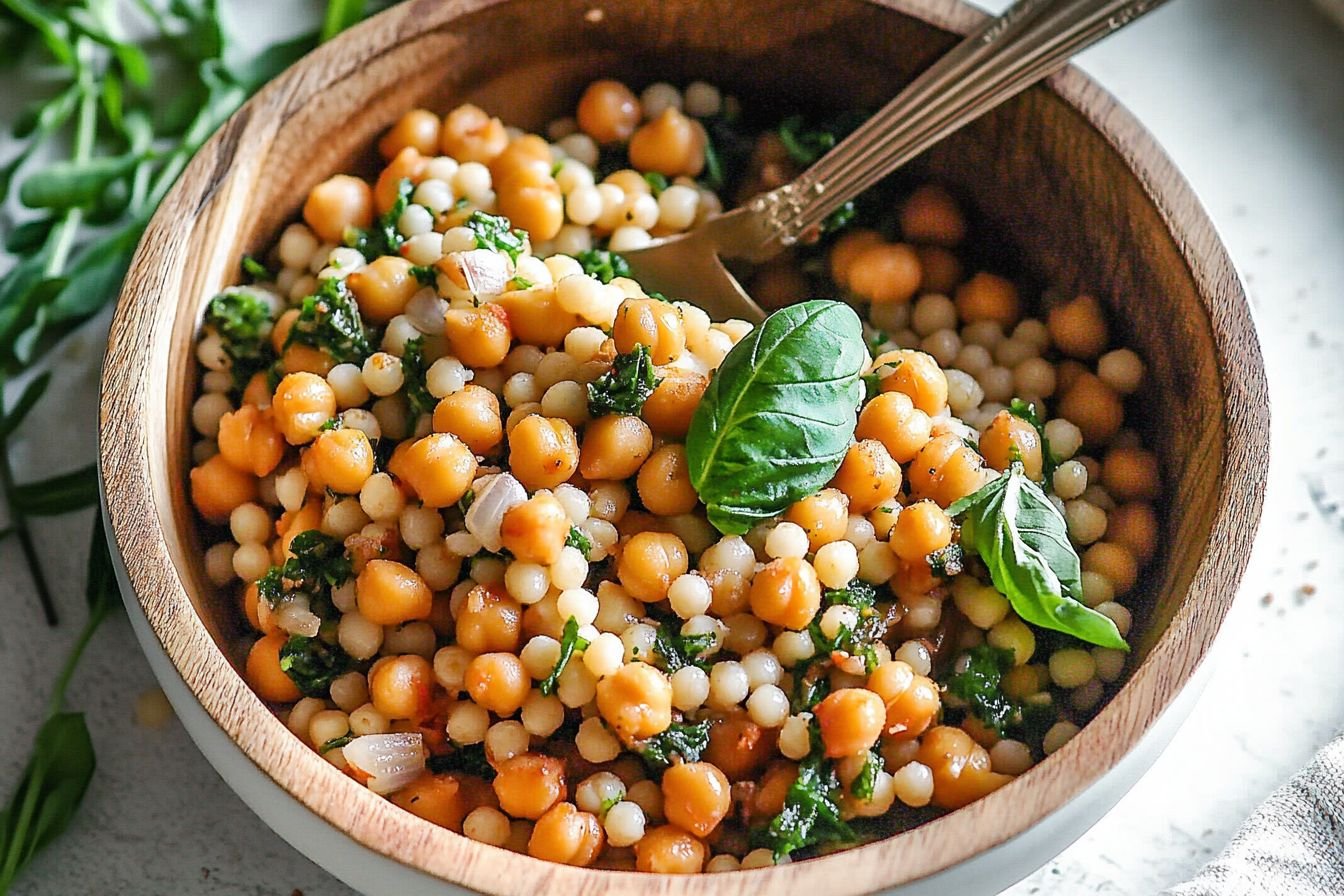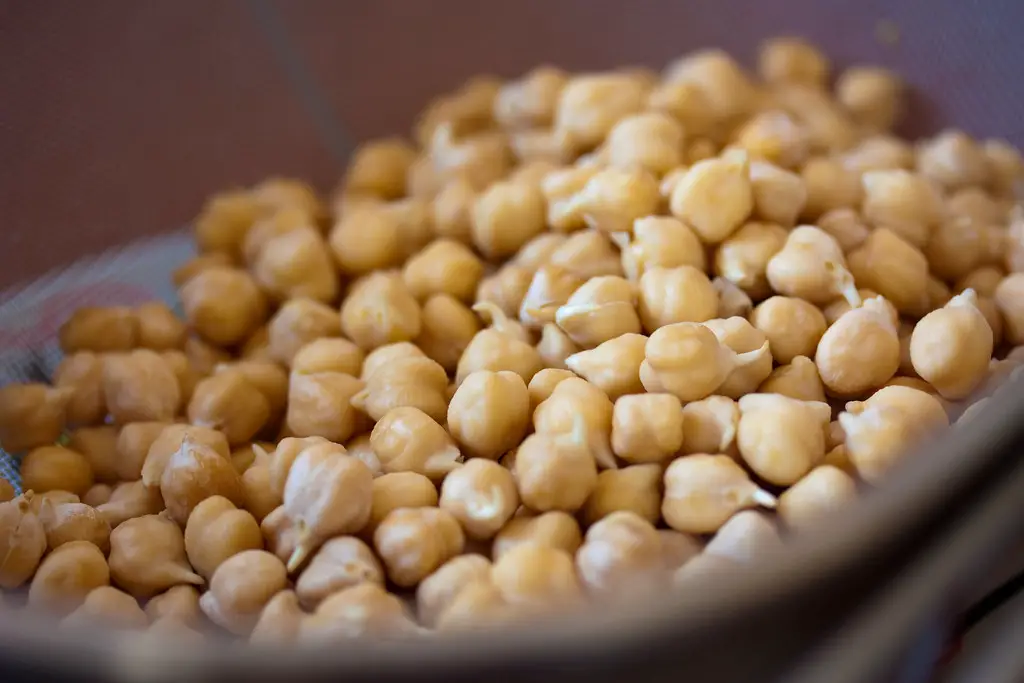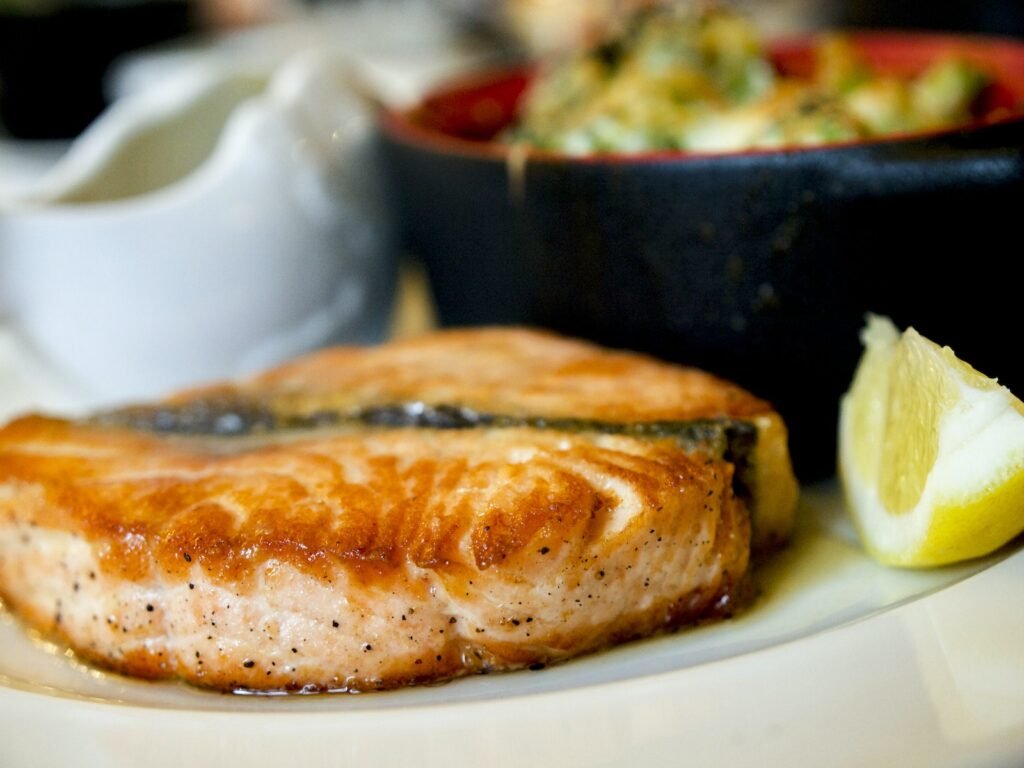I love exploring versatile and nutritious dishes, and pearl couscous with chickpeas is one of my favorites. This delightful combination satisfies your taste buds and packs a punch of protein, fiber, and flavor. With just a few ingredients like dry pearl couscous, vegetable broth, chickpeas, ground coriander, and fresh herbs, you can create a satisfying meal that’s perfect for any occasion.
What Is Pearl Couscous?
Pearl couscous, also known as Israeli couscous, is a type of pasta made from semolina flour. Unlike traditional couscous, which consists of tiny granules, pearl couscous features larger, round grains.
This pasta originates from the Middle East and offers a chewy texture that adds a delightful component to various dishes.
Key Characteristics:
- Shape: Round and larger than regular couscous.
- Texture: Chewy and slightly firm.
- Cooking Time: Generally cooks in about 10-12 minutes.
I enjoy using pearl couscous as a base for salads, stews, and grain bowls due to its ability to absorb flavors from other ingredients.
This versatile ingredient can easily take on different seasonings and sauces, making it a favorite in many kitchens. Whether I prepare it warm or cold, pearl couscous consistently elevates my meals.
Ingredients:
- 1 cup of dry pearl couscous
- 1 ½ cups of vegetable broth or water
- 1 can of drained and rinsed chickpeas (15 oz)
- 1 tbsp of ground coriander
- 1 tbsp of za’atar
- 1 tsp of garlic powder
- ½ cup of baby arugula or spinach
- ¼ cup of fresh basil
- 2 tbsp of golden raisins
- 1 tbsp of extra virgin olive oil
- 1 tbsp of lemon juice
- Salt and pepper, to taste
For garnishing, I keep handy:
- Parsley
- Additional golden raisins
- Extra virgin olive oil
How to make pearl couscous with chickpeas?
- To begin, bring pearl couscous and broth to a boil in a covered pot. Reduce heat, uncover, and simmer until tender (10 minutes), draining any excess liquid.
- Once the couscous is cooked, stir in chickpeas, herbs, spices, and a handful of greens. Brighten the dish with fresh basil, golden raisins, olive oil, and a squeeze of lemon juice.
- Transfer the couscous to a serving dish and garnish with parsley, edible flowers, and additional raisins. Finish with a drizzle of olive oil and season to taste.
Pairing and Serving Suggestions
For vegetable pairings, consider:
- Roasted bell peppers
- Grilled zucchini
- Sautéed spinach
These add color and flavor.
I enjoy serving this dish with dressings like:
- Lemon vinaigrette
- Tahini sauce
- Herbed yogurt
A drizzle elevates the taste.
For a complete meal, I often add protein options such as:
- Grilled chicken
- Baked salmon
- Tofu for a vegetarian option
This adds variety while maintaining balance.
Garnishes enhance presentation and flavor. Some favorites include:
- Fresh herbs like parsley or coriander
- Sliced avocados
- Chopped nuts for crunch
Serving this dish warm or at room temperature works well. I often place it in a bowl or on a platter for sharing.
Storing Leftovers
Refrigeration and Shelf Life
To store leftover pearl couscous and chickpeas, cool the dish to room temperature first. Transferring hot food directly into the fridge can raise the fridge temperature, affecting other items.
Once cooled, place the couscous in an airtight container. This helps prevent moisture loss and avoids picking up odors from other foods.
In the refrigerator, leftovers can last for 3 to 5 days. Make sure to label the container with the date to keep track of freshness. If I don’t think I’ll eat them in that time, freezing is a great option.
Reheating for Best Quality
When I’m ready to enjoy my leftovers, reheating them properly is key. Start by transferring the desired portion into a microwave-safe bowl. I usually sprinkle a little water on top to add moisture.
Microwave on medium power in short intervals, stirring in between, until heated evenly. Alternatively, I prefer reheating on the stove for a fresher taste. Just add a splash of olive oil and heat over medium until warm, stirring frequently.
Avoid reheating multiple times, as this can lead to a loss of texture and flavor. It’s best to reheat only what I’ll eat in one sitting.
Common Mistakes to Avoid
- Skipping the Rinsing: Always rinse the chickpeas thoroughly. This step removes excess salt and improves the overall taste.
- Overcooking the Couscous: Cooking pearl couscous for too long makes it mushy. Aim for a tender, yet slightly al dente texture.
- Neglecting Seasoning: Don’t forget to season the dish. Add salt, pepper, and herbs at different stages to build flavor.
- Ignoring Liquid Ratios: Pay attention to the water-to-couscous ratio. Adding too much liquid can lead to a soupy consistency.
- Not Cooling the Chickpeas: If using canned chickpeas, cool them after heating to avoid steaming the couscous.
- Using Insufficient Heat: Cook the ingredients on a medium-high flame to enhance the flavors. Low heat can lead to underwhelming results.
- Forgetting Garnishes: Avoid skipping fresh herbs or lemon juice. They brighten the dish and add a refreshing element.
Conclusion
I find that pearl couscous with chickpeas is a delightful dish that balances flavor and nutrition. The nutty texture of pearl couscous complements the earthiness of chickpeas, making it satisfying.
I love how versatile this recipe is. It works well as a main course or a side dish and fits various diets. You can easily adapt it with different spices and vegetables.
When I prepare this dish, I appreciate that it fills me up and keeps me energized. The combination of ingredients provides the essential nutrients required for a balanced meal.
Next time I look for something simple yet tasty, I’ll choose pearl couscous with chickpeas. It’s a great way to explore flavor while keeping things healthy.
As you’ve read above, salmon is a perfect pairing for this dish.
Get this baked salmon recipe now (by clicking the image below):






